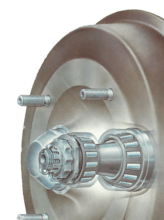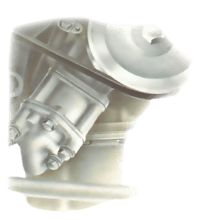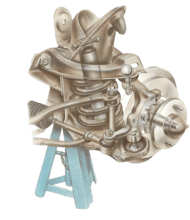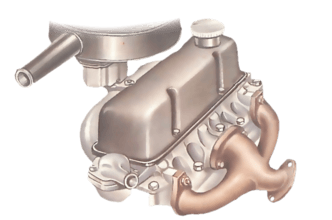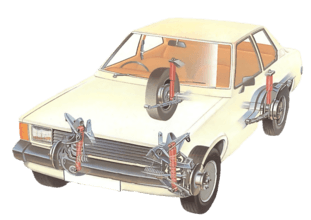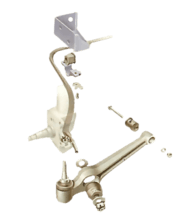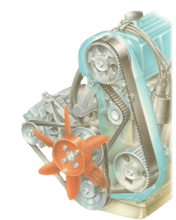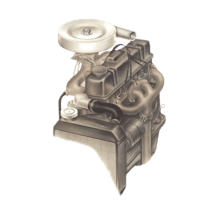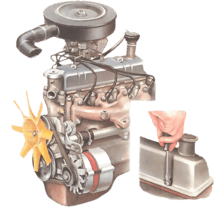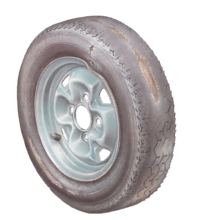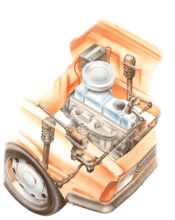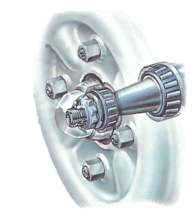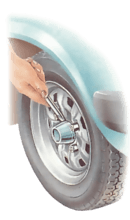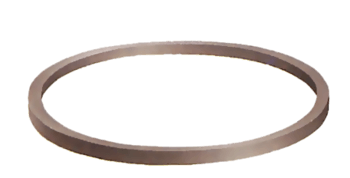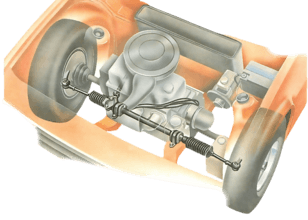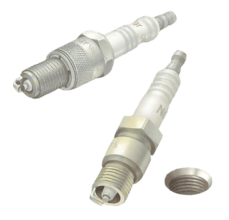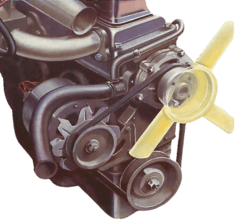Clé dynamométrique
Many nuts have to be tightened to a specific torque setting given in Nm (Newton metres), kg/m or lb/ft (imperial). If a nut is over-tightened, the bolt may be damaged or shear off; if it is not tightened enough, the nut may work loose. Cylinder-head nuts, for example, need tightening in sequence to equal pressures to avoid head distortion.
The torque, or turning power, can be measured on a torque wrench, which has a handle with a square drive that fits into a socket spanner, and a measuring or setting scale, sometimes up to 150 lb/ft (210 Nm). The commonest type has a scale and pointer. More expensive wrenches have a dial indicator or a micrometer scale that can be preset to the required torque, and give an audible click when it is reached.
A torque wrench is a tool used to precisely apply a specific torque to a fastener such as a nut or bolt. It is usually in the form of a socket wrench with special internal mechanisms. It was invented by Conrad Bahr in 1918 while working for the New York City Water Department. It was designed to prevent overtightening bolts on water main and steam pipe repairs underground.
A torque wrench is used where the tightness of screws and bolts is crucial. It allows the operator to measure the torque applied to the fastener so it can be matched to the specifications for a particular application. This permits proper tension and loading of all parts. A torque wrench measures torque as a proxy for bolt tension. The technique suffers from inaccuracy due to inconsistent or uncalibrated friction between the fastener and its mating hole. Measuring bolt tension (bolt stretch) is more accurate but often torque is the only practical means of measurement.
Torque screwdrivers and torque wrenches have similar purposes and mechanisms.
Read more on Wikipedia
Cet outil est utilisé dans
Non-driven wheel bearings - the front-wheel bearings of rear-wheel-drive cars and rear-wheel bea...
If the oil pump is fitted to the outside of the engine, you may be able to reach it...
If you have to replace a coil spring on the front suspension, the replacement spring must be of ...
An exhaust-manifold gasket is more likely to need renewing than the gasket on the intake manifold...
Modern telescopic dampers cannot be overhauled at home. The only servicing possible is to replac...
The forces imposed on the anti-roll bar subject it to constant twisting and flexing, which in tu...
The tension of the toothed belt that drives an overhead camshaft must be checked at the intervals...
Removing the cylinder head is straightforward on pushrod engines, but more complicated on overhea...
Gaskets and oil seals should be replaced if worn or leaking, or whenever removed during servicin...
Tyres are put under tremendous strains when a car is being driven. There are only four relativel...
Places where vital components are mounted on the bodywork or chassis should be inspected at leas...
Wheel bearings need periodic checking - and adjusting if necessary - usually at 12,000 mile serv...
When you take the wheels off to inspect the tyre walls, clean the wheels thoroughly and look clo...
There are two main types of oil seal: static and dynamic. A static oil seal fits between two non...
Most modern cars have rack-and-pinion steering gear, mounted across the car. Usually the rack ho...
Check and clean sparkplugs every 5,000 miles (8,000 km) and replace them after 10,000 miles (16,...
Water pumps wear out through age, through lack of lubrication on older types — which need greasi...

